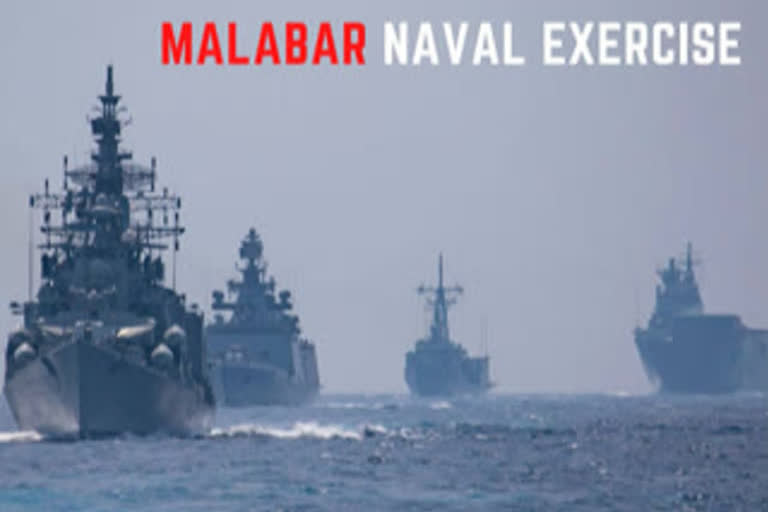New Delhi: Nuclear-powered US aircraft carrier Carl Vinson will be part of the second phase of the high-voltage Malabar exercise from October 12-15, featuring the navies of all four Quad countries -- India, the US, Australia and Japan. The mega wargame in the Bay of Bengal will coincide with the visit to India by Chief of Naval Operations (CNO) of the US Admiral Mike Gilday who is scheduled to hold talks with top Indian military brass.
"Make no mistake, India is one of our closest strategic partners, and our relationship is a stronghold of a free and open Indo-Pacific," Admiral Gilday said ahead of the visit. Indian Navy officials said the second phase of the Malabar exercise will feature a number of complex drills involving several frontline warships and other assets of the four navies.
The Indian Navy will deploy its frontline warships INS Ranvijay and INS Satpura, a submarine and a fleet of P8I long-range maritime patrol aircraft, they said. Besides the Nimitz-class aircraft carrier USS Carl Vinson, the US will also deploy Ticonderoga-class guided-missile cruiser USS Lake Champlain and Arleigh Burke-class guided-missile destroyer USS Stockdale.
After taking her maiden voyage in 1983, USS Carl Vinson was part of several major operations including Operation Desert Strike, Operation Iraqi Freedom, Operation Southern Watch and Operation Enduring Freedom. Japan Maritime Self-Defense Force will deploy helicopter carrier JS Kaga and Murasame-class destroyers JS Murasame while the Royal Australian Navy will be represented by HMAS Ballarat and HMAS Sirius, the officials said.
"The second phase of the exercise would build upon the synergy, coordination and inter-operability developed during the First Phase of the exercise and would focus on advanced surface and anti-submarine warfare exercises, seamanship evolutions and weapon firings," Indian Navy spokesperson Commander Vivek Madhwal said.
Read: Rajasthan woman takes charge of British High Commission for a day
"The 25th edition of Malabar exercise, while observing all protocols during the COVID-19 pandemic, is reflective of the commitment of the participating countries to support a free, open, inclusive Indo-Pacific as well as a rules-based international order," he said. Following India's invitation, Australia participated in the Malabar exercise last year that effectively made it a drill by all four member nations of the Quad or Quadrilateral coalition. Australia participated in the first phase of the Malabar exercise this year too.
The exercise witnessed renewed momentum in the backdrop of the growing convergence of interests in the maritime domain among the four Quad countries. China has been suspicious about the purpose of the Malabar exercise as it feels that the annual war game is an effort to contain its influence in the Indo-Pacific region.
The Malabar exercise started in 1992 as a bilateral drill between the Indian Navy and the US Navy in the Indian Ocean. Japan became a permanent member of the exercise in 2015. This annual exercise was conducted off the coast of Guam in 2018 and off the coast of Japan in 2019.
Last year, the exercise was hosted in two phases in the Bay of Bengal and the Arabian Sea. There have been mounting global concerns over China's growing military assertiveness in the Indo-Pacific region.
India, the US, Australia, Japan and many other like-minded countries are working towards ensuring a free, open and inclusive Indo-Pacific.
PTI



